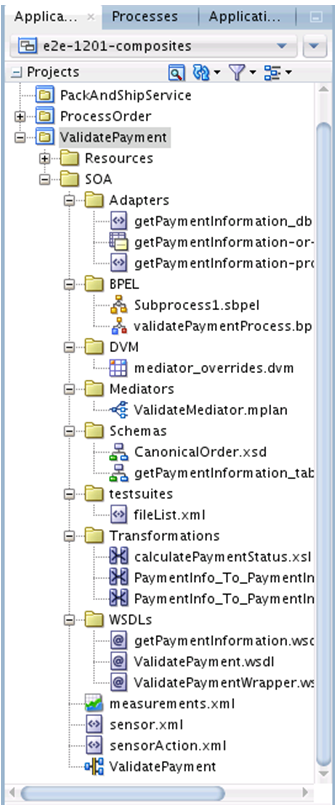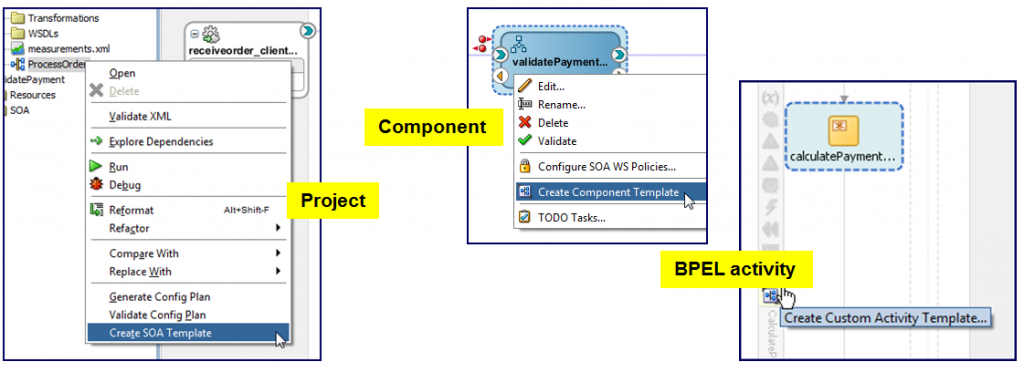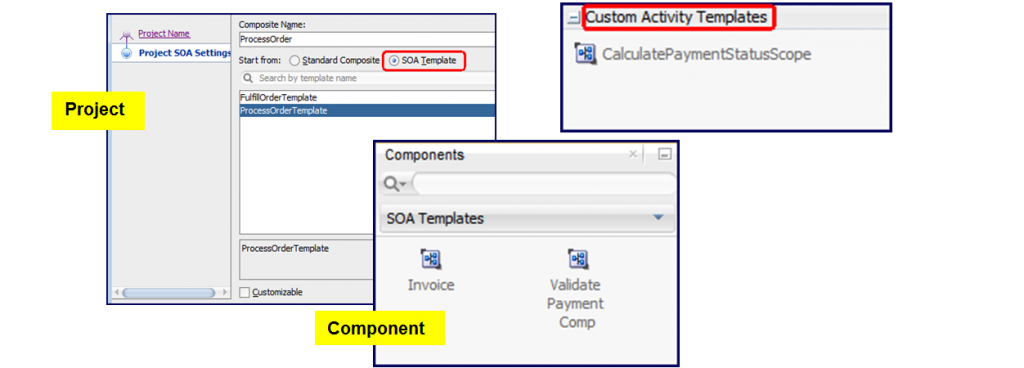Oracle released SOA Suite 12c (12.1.3) bringing a further integration between components and a bunch of new features. This blog is one in a series of new features summaries about SOA Suite 12c to view them all check this blog.
This blog will summaries the features specific to SCA Composites / BPEL and the Enterprise Manager Dashboards. The features are summarised, but most will get an own blog that tells about the full details.
This blog will talk about the following topics:
• Changed project / directory structure • Project / Component en Scope Templates • Updates to the composite editor • Updates to the mediator • Updates to the BPEL component / activities • Fault Policy Editor • SOA Composer refresh in 12c • SOA Suite Debugger •
Changed project / directory structure
The structure of the project has changes drastically. All components are now placed in there own sub folder.
• Adapters – Collection of JCA adapter resources
• BPEL – Collection of BPEL en SBPEL components
• DVM – Collection of Domain Value Maps
• Mediators – Collection of Mediator components
• Schemas – Collection of XML Schemas (XSD)
• Testsuites – Collection of Composite tests
• Transformations – Collection of XSLT transformations
• WSDLS – Collection of service contracts
The composite.xml carries the same name as in 11.1.1.7, the name of the SOA project.
Kick-start an SCA Composite using templates
In 12c it is easier then ever to re-use at all levels within a SCA composite. Using the build-in template support you can kick-start a SCA Composite or add reusable components. There are three types of templates; SOA Project, Component and Custom Activity template. Templates are fully editable, one you apply them to you SCA Composite or BPEL component it is part of that composite or component. When you create a template all dependencies (partnerlinks) are also part of the template.Project Templates
With this kind of template you can create/load an entire project. Great example for this template is a skeleton project with default adapters and mediators (without wires) of use it for training purposes so that everybody starts with the same resources. Project templates are accessible at the time of new project creation directly, or when it is part of new application.
Component Templates
With this kind of template you can create/load a component with all his dependencies (resources and components). For example a BPEL process with default invocations to common services. This template can be automatically discovered in the component palette when in the Composite editor.
Custom Activity Templates
Similar to a standalone subprocess, only the code is added to existing BPEL process and dependencies are added to Composite. It can contain variables and activities (assign, invoke, transformation, etc). This template can be automatically discovered in the component palette when in the BPEL Component editor.
Templates will be visible if they’re available in the template path, configured in JDev, but there is also an import wizard available to bring templates in from different system.
Read full article on the AMIS Technology Blog.


No comments:
Post a Comment